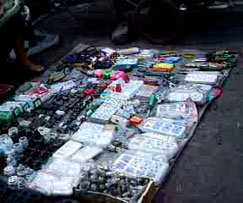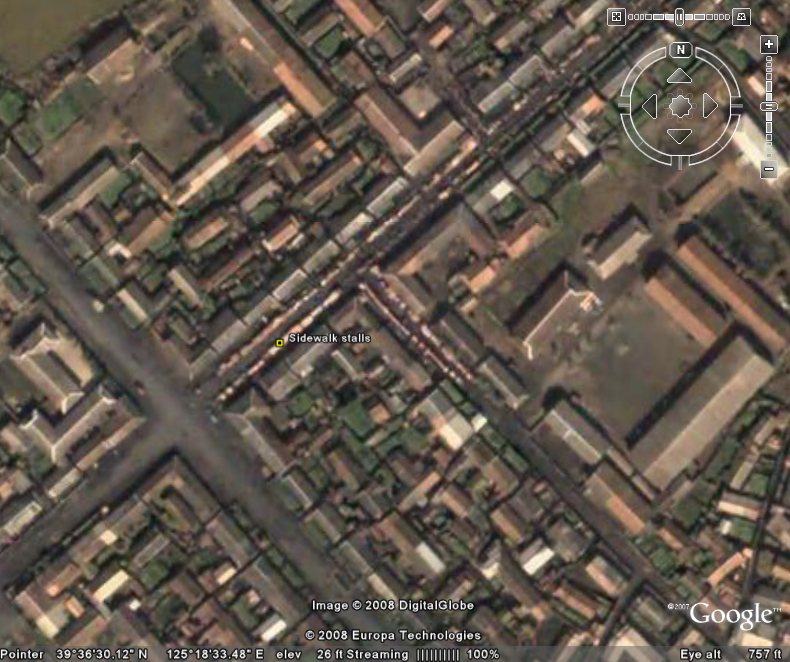News of the DPRK’s food shortages began to surface several weeks ago when Good Friends reported:
North Korea’s chronic food shortage has worsened to affect even some of the country’s elite citizens in the capital, a South Korean aid group said Thursday.
The communist nation has not given rice rations to medium- and lower-level officials living in Pyongyang this month after cutting the rations by 60 percent in February, the Good Friends aid agency said in its regular newsletter.
Pyongyang citizens are considered the most well-off in the isolated, impoverished country, where the government controls most means of production and operates a centralized ration system. Only those deemed most loyal to Kim Jong Il’s regime are allowed to live in the capital.
The food situation is more serious in rural areas, with residents in many regions in the country’s South Hwanghae province living without food rations since November, the aid group said. (AP)
Why was this the case?
Floods last August ruined part of the main yearly harvest, creating a 25 percent shortfall in the food supply and putting 6 million people in need, according to the U.N. World Food Program.
Over the winter, drought damaged the wheat and barley crop, according to a recent report in the official North Korean media. That crop normally tides people over during the summer “lean season” until the fall harvest.
North Korea’s ability to buy food, meanwhile, has plunged, as the cost of rice and wheat on the global market has jumped to record highs, up 50 percent in the past six months.
China also appears to have tightened its food squeeze on North Korea for domestic reasons. In order to meet local demand and control inflation, Beijing slapped a 22 percent tariff on grain exports to the North. (Washington Post)
So North Korea’s domestic agricultural production has fallen and so have commercial food imports (international inflation, OECD government subsidies for bio-fuels, and increasing fuel prices have combined to raise the prices of commodities such as rice and pork up to 70% in the course of a year).
Compounding this problem, however, agricultural aid from North Korea’s two most reliable benefactors (China and South Korea) has dried up.
[China] has quietly slashed food aid to North Korea, according to figures compiled by the World Food Program. Deliveries plummeted from 440,000 metric tons in 2005 to 207,000 tons in 2006. Last year there was a slight increase in aid, but it remained far below the levels of the past decade. (Washington Post)
And strained relations with the new Lee government in South Korea have not helped:
The South typically sends about 500,000 tonnes of rice and 300,000 tonnes of fertiliser a year. None has been sent this year and without the fertiliser, North Korea is almost certain to see a fall of several tens of tonnes in its harvest (Reuters)
So what will be the mitigating factors that prevent another humanitarian emergency?
“The reason for the mass starvation that occurred in late 90s is that North Korea faced natural disasters without expanding the market’s capability to substitute for the broken planned economy capability, and so the damage to North Korean citizens was inevitably large.”
“The market in North Korea has expanded in the last 10 years. The supply and demand structure of daily necessities, including food items, has been formed.”
“Because the market capacity has expanded, the possibility of a mass-scale starvation occurring is no longer high. In actuality, the change in food prices is being monitored at the market.”
-Dong Yong Seung, the Samsung Economic Research Institute’s Economic Security Team Chief, speaking at the 19th Expert Forum sponsored by the Peace Foundation (Daily NK)
Mr. Dong’s analysis addresses the improved efficiency of DRPK’s market supply chains but does not address the effects of an adverse supply shock.
The UN seems ready to help, although it has not been asked:
Institutionally, mechanisms are in place in North Korea to ring the international alarm bell before hunger turns into mass starvation. The World Food Program monitors nutrition in 50 counties, and the Kim government has become expert in asking for help.
“The North Koreans know that they are facing a difficult situation and have made it increasingly clear in the past few weeks that they will need outside assistance to meet their growing needs,” the U.N. official said, asking not to be identified because of the sensitivity of the issue.
North Korea, which even with a good harvest still falls about 1 million tonnes, or around 20 percent, short of what it needs to feed its people, relies heavily on aid from China, South Korea and U.N. aid agencies to fill the gap.
The UN official said it was clear from a variety of sources that the food security situation was worsening in North Korea and that it needed to be addressed.
Last month Kwon Tae-jin, an expert on the North’s agriculture sector at the South’s Korea Rural Economic Institute told Reuters that if South Korea and other nations did not send food aid, the North would be faced with a food crisis worse than the one in the 90s.
The U.N. Food and Agriculture Organisation said in late March it sees the North having a shortfall of about 1.66 million tonnes in cereals for the year ending in October 2008.
The North will start to feel the shortage the hardest in the coming months when its meagre stocks of food, already depleted by flooding that hit the country last year, dry up and before the start of its potato harvest in June and July. (Washington Post)
The UNWFP, however, will be under pressure from its donors to monitor food aid and make sure it is not diverted to non-emergency uses. Under these conditions, it is not likely that they will be asked to provide much aid until a catastrophy is already underway. So with the UN out of the picture, who is best positioned to prevent the reemergence of a humanitarian crisis in North Korea today? China.
Despite China’s own food probelms, however, it is always likely to capitulate, at least in part, to North Korea’s emergency requests. China does not want to deal with another North Korean famine, particularly during the Olympic season, and they certainly do not want to deal with any political instability that could result.
Yonhap reports that the DPRK has asked the Chinese for 150,000 tons of corn this year. Chinas says they will give 50,000 tons–and that is just initially. (Yonhap)
UPDATE 4/14/2008: I still have not seen any reports in the media of Noth Korea seeking suport from Russia.
UPDATE 6/9/2008: China increases grain export quota to North Korea to 150,000 tons
(more…)


